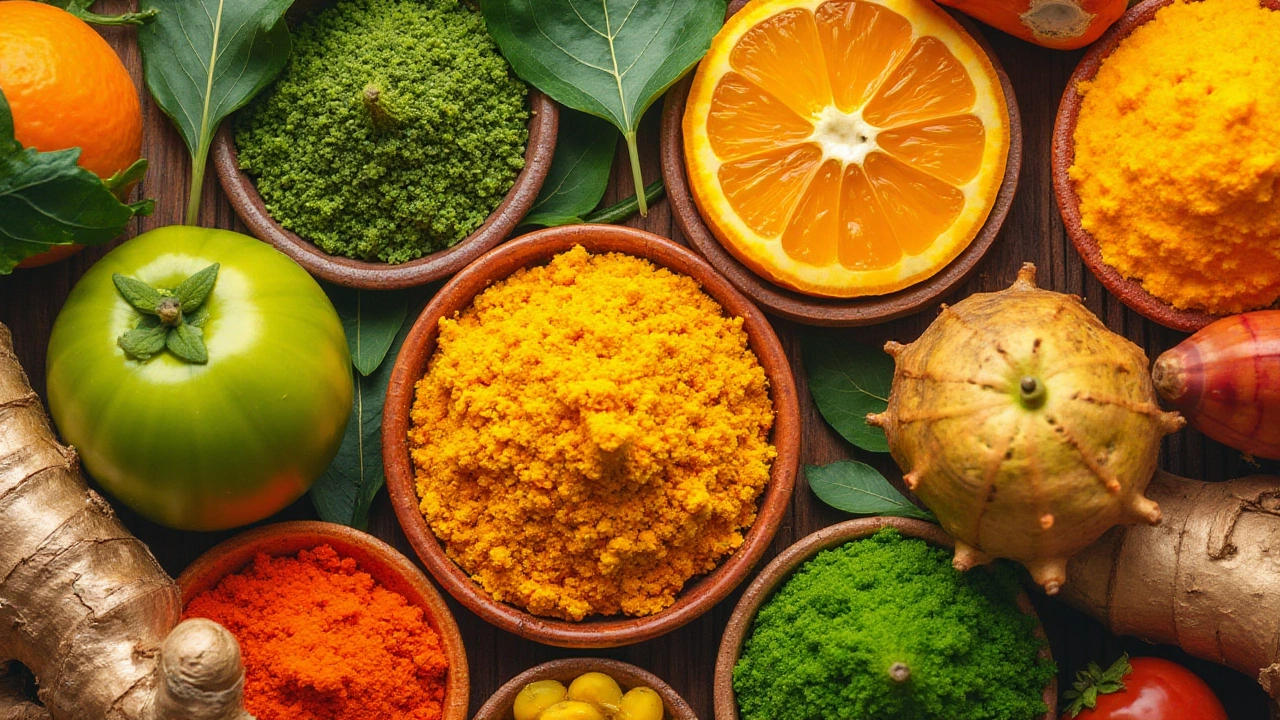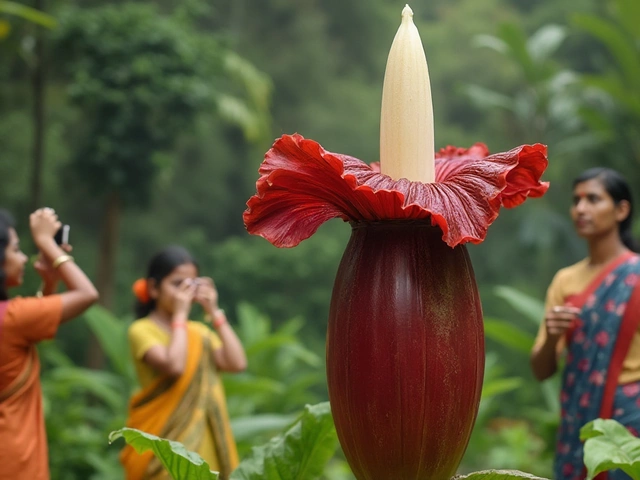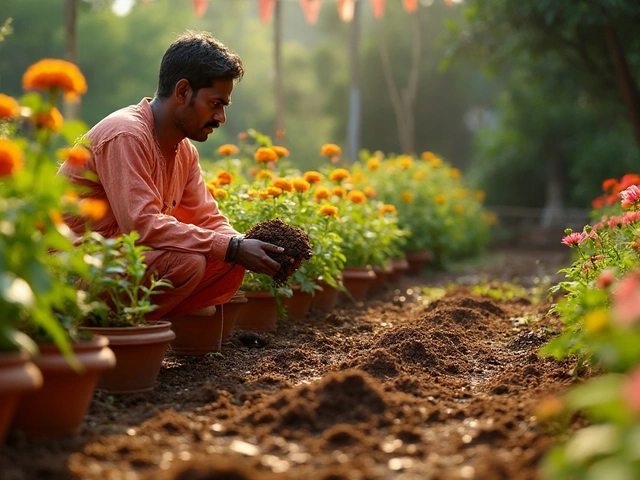The term 'superfood' often sparks curiosity and interest, leading many to wonder what truly qualifies a vegetable for this title. As health enthusiasts across the globe explore the dietary benefits of superfoods, India's rich agricultural landscape provides a unique opportunity to delve into the world of vegetable gardening.
Home-grown veggies not only offer a fresh supply of nutrients but also the satisfaction of knowing exactly what ends up on your plate. In this article, we'll shed light on what makes a vegetable a supreme superfood, especially within the Indian context, and share valuable tips for nurturing these nutritional powerhouses right in your own garden.
Whether you're a seasoned gardener or just getting started, understanding the benefits of cultivating superfoods can transform your garden and your diet.
- Understanding Superfoods
- Benefits of Growing Superfoods
- Popular Superfood Vegetables in India
- Tips for Successful Vegetable Gardening
Understanding Superfoods
The journey into the world of superfoods is as intriguing as it is enriching. Superfoods are often described as foods that offer maximum nutritional benefits for minimal calories. These are packed with vitamins, minerals, and antioxidants, helping to boost health in various ways. The term itself might seem trendy, but the concept roots back to ancient traditions across cultures. For instance, Indian cuisine embodies the essence of superfoods with its rich use of spices, lentils, and leafy greens, each brimming with health-promoting properties.
Superfoods are believed to offer numerous health advantages, from improving heart health to enhancing digestion and boosting immunity. These foods typically have high levels of antioxidants, combating oxidative stress and supporting cellular function. In this way, they help in reducing the risk of chronic diseases. Popular superfoods include spinach, kale, and broccoli, often found in everyday vegetable gardening in India. The truth is, the idea of a superfood isn't about exotic imports but rather embracing what's locally available and integrating it into your diet.
Science supports the health claims associated with superfoods. A research study published in the journal of Nutrition Reviews states that consuming nutrient-dense foods can lead to better health outcomes and longer lifespan. The report mentions, "Incorporating a variety of superfoods into one's diet can foster longevity and reduce the risk of lifestyle-related ailments."
"The future of nutrition is about maintaining balance and focusing on the nutrient density of foods," notes Dr. Anjali Pathak, a nutritionist with a keen interest in indigenous crops. "Superfoods, particularly those grown locally, provide essential nutrients required by the body, without the need for excessive intake."
The superfood label often raises eyebrows due to marketing buzz. Yet, when stripped of the hype, it emphasizes whole, natural foods that deliver impressive benefits. Take the humble moringa, for example. Known as the 'Miracle Tree', moringa leaves are packed with protein, calcium, beta-carotene, vitamin C, and potassium. With its roots deeply dug into Indian soil, moringa's nutrient profile makes it an invaluable addition to family gardens and diets. Embracing such local treasures not only enriches the diet but also supports ecological and economic sustainability.
Benefits of Growing Superfoods
Embarking on the journey of growing your own superfoods is like unlocking a treasure trove of health benefits that go beyond what you’d typically find on grocery store shelves. When you cultivate these nutrition-packed wonders in your backyard, you tap into their freshest form, ensuring maximum nutrient retention and minimizing any exposure to harmful chemicals. This connection with nature not only empowers you as a grower but also reassures you about the quality of your daily meals. Imagine picking a handful of vibrant spinach or kale leaves, immediately consuming them, and relishing their enriching goodness in its purest state. Such freshness is hard to replicate with even the best store-bought produce.
For those who seek a healthier lifestyle, growing superfoods at home offers the additional benefit of customizing your diet to suit specific health goals. Various vegetables like amaranth, moringa, and fenugreek—a few superfoods commonly grown in India—are known for their unique properties that can enhance immunity, boost energy levels, and even play a role in managing chronic conditions. Amaranth leaves, for instance, are rich in iron and essential vitamins, providing crucial support to your blood health and body functions. By including these in your garden, you ensure that your dietary choices are not limited by availability or quality at the store.
Engaging with the earth and watching your plants grow can also be immensely therapeutic, offering mental health benefits that are often underestimated. Gardening has been shown to reduce stress significantly, allowing individuals to find peace amidst life's chaos. It provides a sense of accomplishment and beauty that can uplift your day; there's something uniquely satisfying about nurturing life from seed to harvest. As a result, many find this hobby to be a rewarding escape, providing a sense of joy and fulfillment that's hard to match.
Incorporating superfoods into your vegetable garden can also align with greater sustainability goals. By reducing dependence on packaged foods, you're contributing less to environmental waste associated with packaging and transportation. Growing your veggies allows you to make eco-conscious decisions, such as employing organic pest control methods and conserving water, which supports the planet's health. As Anthony T. Hincks wisely notes,
"Growing your own food is like printing your own money."It's an investment that pays off—not just in personal health but in environmental sustainability.
The advantages of cultivating superfoods extend beyond personal boundaries. Sharing your bounty with neighbors fosters community spirit and can inspire others to embark on similar gardening ventures. It can serve as a stepping stone for greater educational pursuits where families and friends learn together about nutrition, agriculture, and environmental stewardship. With a little guidance, a patch of land can turn into a classroom, where people, young and old, gather practical knowledge and life skills effective for their well-being.

Popular Superfood Vegetables in India
India, with its diverse climate and rich soil, is a veritable treasure trove for growing superfoods. These nutrient-packed crops not only promote health but also flourish in Indian gardens. Among the most prominent superfood vegetables are the humble moringa, the leafy spinach, and the renowned broccoli, each bringing their unique set of benefits to the table. Moringa, often dubbed the 'drumstick tree,' has found its way into modern nutrition discussions due to its powerhouse nutrient profile, which includes high levels of vitamins A, C, and E, calcium, and potassium. This makes it an excellent candidate for the superfood title. Spinach, with its dark leafy greens, is celebrated for iron and folate content, offering strength not unlike the famous comic strip hero, Popeye. Broccoli, while not native to India, has adapted well to the conditions here and is packed with vitamins C and K, fiber, and cancer-fighting compounds known as glucosinolates.
These vegetables are not just passing fads; they are firmly rooted in India's culinary traditions and agricultural practices. An integral part of the South Indian diet, moringa leaves are used in everything from curries to chutneys. Spinach, or 'palak' as it is locally known, is a staple in dishes like palak paneer, lending its health benefits to palates across the country. Broccoli's popularity has surged in recent years, particularly among health-conscious younger generations. A study conducted by the Indian Council of Agricultural Research highlighted India's potential in cultivating superfoods, suggesting that an increased focus could bolster the nation's economy and nutritional standards.
"The future of agriculture in India looks promising with the rising acceptance and cultivation of superfood vegetables," noted Dr. Ramesh Kumar, a leading agricultural scientist based in New Delhi.
Growing these superfoods is not just a matter of planting seeds but understanding the specific needs and conditions each plant thrives in. Moringa, for example, requires a warm climate and can grow with minimal water, making it ideal for semi-arid regions. Spinach prefers cooler climates, growing well during the winter months in India. Meanwhile, broccoli requires a balanced approach when it comes to temperature, needing protection from extreme heat, often being planted during the cooler months too. By understanding these conditions, gardeners can better cater to the specific needs of each plant, ensuring a bountiful harvest.
Statistics have shown an increasing number of home gardeners in India are turning to these superfood selections for their apparent health benefits. A market research report found that the organic food sector, including vegetable superfoods, saw a growth rate of over 25% over the past decade. An illustrative comparison can be drawn with a table showcasing the average nutritional values per 100g for these vegetables:
| Vegetable | Calories | Vitamin C (mg) | Iron (mg) |
|---|---|---|---|
| Moringa | 64 | 51.7 | 4.0 |
| Spinach | 23 | 28.1 | 2.7 |
| Broccoli | 55 | 89.2 | 0.7 |
The data, drawn from nutritional studies, underlines why these vegetables are hailed as superfoods: they boast richness in vitamins and minerals essential to the human diet. As awareness of their benefits grows, along with an understanding of their cultivation process, more Indians are wielding shovels and spades to tap into this health-boosting garden phenomenon.
Tips for Successful Vegetable Gardening
Starting a vegetable gardening journey, especially in India, can be incredibly rewarding. With the right approach and mindful adherence to some practical principles, your garden can flourish, offering an abundant supply of nutritional produce. One of the first things to bear in mind is the importance of soil health. Ensuring soil is rich in organic matter provides a strong foundation for your plants. Regularly adding compost can improve fertility and water retention, which is crucial in more arid regions. Rotate crops annually to prevent pests from becoming unmanageable, and consider green manures to invigorate the soil at the end of the growing season.
Water plays a vital role in a successful garden, more so in a country like India, where monsoon patterns may not always align perfectly with the growing season of your chosen crops. Implementing a smart irrigation system can conserve water and ensure your superfood plants get the hydration they need without waste. Drip irrigation and rainwater harvesting are excellent techniques that enhance water efficiency. An interesting fact is that the Indian Subcontinent experiences around 3500 trillion liters of rainfall annually, but only 700-900 trillion liters is effectively used. Efficiently managing this resource is vital for sustainable gardening.
Beyond soil and water management, understanding the local climate is another key element for a thriving garden. Different superfoods have unique requirements when it comes to sunlight, temperature, and humidity. In varying climates across India, from the humid terrains of Kerala to the dry landscapes of Rajasthan, tailoring your planting times and crop selections can optimize growth. For example, leafy greens and cruciferous vegetables thrive in cooler months, while gourds and beans are more suited for the heat. Knowing this dynamic helps plan for a year-round harvest without significant resource waste.
Combatting Pests Naturally
Every gardener will at some point face the challenge of pests. However, relying on chemical pesticides can often do more harm than good, disrupting the ecosystem in your vegetable gardening efforts. Building a habitat for beneficial insects, such as ladybugs and dragonflies, can keep pest populations in check without harming your plants. Planting a mix of flowers and herbs like marigold, basil, and coriander not only deters pests but also attracts pollinators, a double benefit! To enhance your natural pest defense, intercropping techniques such as growing onions or garlic alongside your primary superfood plants can further reduce pest incidences. These aromatic plants repel common nuisances like aphids and caterpillars with minimal effort from your end.Patience and observation are as much a part of vegetable gardening as the physical work itself. Developing an understanding of plant behavior and growth patterns will enable better decision-making. It’s important to maintain detailed records of your gardening activities, keeping notes on weather patterns, harvest times, and any challenges faced. This data, accumulated over time, can be instrumental in continuously improving yields and quality. As gardening is both an art and science, expect to learn and adapt as nature will always have its surprises.
According to Sir Albert Howard, a pioneer of organic gardening, "The health of soil, plant, animal and man is one and indivisible." This principle underscores the holistic approach necessary for nurturing a thriving vegetable garden.





